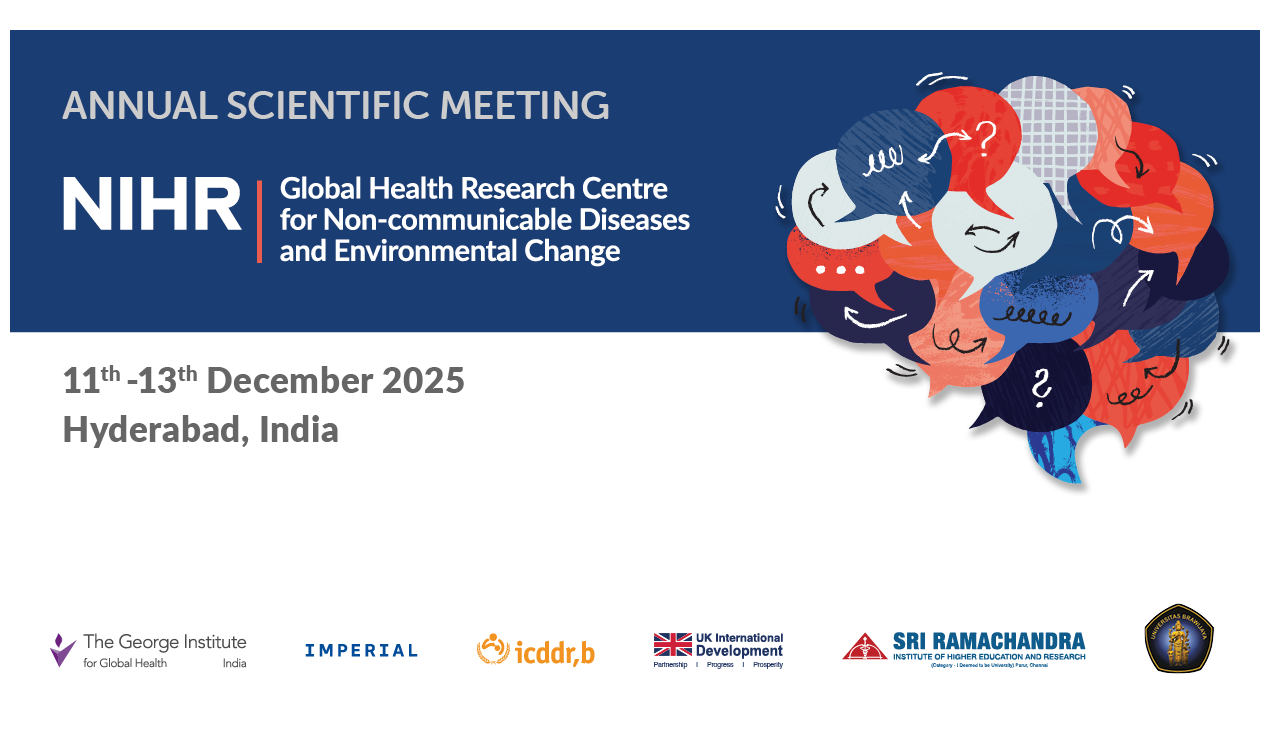28 June 2024
In April 2024, just before the peak summers in India, we visited the Zilla Parishad Municipal High School in Rangoi, Palasa. Having organized an essay and painting competition on the topic ‘Our health, Our world’, we decided to talk to the winners about their lived realities of environment change.
Palasa is a small town in the Srikakulam district of Andhra Pradesh. It boasts of more than 350 Cashew processing industries1 making it one of the largest cashew processing hubs in India. Besides Cashew farming, farmers here also grow paddy, millets and seasonal vegetables.
Although summer had set in, and temperatures reached 41 degrees, the sight of the school soothed us. The co-educational Zilla Parishad Municipal High School was established in Rangoi village in 1982.2 It has well laid out classrooms with a shaded veranda that runs parallel to the school grounds. Owing to a longstanding custom of celebrating each student’s birthday by planting a sapling, the grounds are lined with many potted plants and trees.
We sat with the winners across grades 7, 8 and 9, in the veranda to have a freewheeling chat about our world, our health and everything in between. To break the ice, we asked them what they want to become in future. The answers ranged from teacher to doctor to Indian Administrative Service officials- all professions with a commitment to serve the community, women, and children.
As the conversation moved towards environment, known evils of plastic waste, industrial gases and fertilizers came up.
The seen- what did the students experience in their daily lives.
When we probed further, the students cited examples from their lived experiences. One of the participants mentioned how her grandfather, a farmer was against the use of chemical fertilizers and used only organic fertilizers till he was in-charge of the farmland. ‘Chemical fertilizers are so harmful for the health, it also kills worms which are friends of the farmers’ she explained. Today the organic fertilizers have been replaced by easily available and potent chemical fertilizers.
Another student, talked about artificial colors leaching into water when idols are immersed in fresh-water bodies. One student highlighted the menace of plastic waste strewn on the roads. Yet another girl, focused on air pollution from nearby industries and how it causes respiratory diseases.
Next, we discussed climate change and if they had experienced any adverse events like cyclonic storms. All remembered the cyclone ‘Titli’ which hit the area in 2018. They recollected district officials broadcasting ways to prepare for the storm. Schools were closed and houses storm proofed. Students described the aftermath of the storm: water clogged roads, lack of electricity and families contracting water borne diseases. As per the Andhra Pradesh State Disaster Management Authority website, 14 people died in that cyclone and over 39,000 houses were damaged3 along with considerable loss to livestock.
What remains unseen
Between 2006 and 2020, Andhra Pradesh has weathered 11 cyclones4 causing moderate to heavy loss in terms of lives and damage to houses. The students seemed to have accepted that cyclones are a norm. But there is evidence to suggest5 that climate change can worsen the impact of storms.
And therein lies the problem
Unlike simple cause and effect relationships (industrial smoke causing respiratory disorders), complex relationships that accumulate over time to cause loss of life and property are hardly apparent. For instance, the effect of smoke towards global warming, the consequent impact of warming on food systems and nutrition and its link with burden of diseases is much more complicated to communicate. Additionally, how does one relay the impact to future generations, when communities struggle with day-to-day survival?
We then discussed actions that could improve environment and impact of climate change. The responses covered less usage of plastic, planting more trees, organic farming, stronger audits and rules for industrial waste management- all ideas discussed in their classes and mentioned in their course books. Perhaps the time was short to come up with the next brilliant idea which was doable within their neighborhood and community. Perhaps the children had not thought about these matters beyond their school curriculum.
The way forward: weaving sustainability in local discourse
During our conversation, one student suddenly suggested “Man makes pollution and man is affected by pollution”. Her eyes shone as she summarized the discussion, having realized a fundamental truth.
We did feel that the students were NOW primed to think about environment and climate in all earnestness.
We also met the passionate teachers who encouraged the students to speak their minds. They talked enthusiastically about the science projects and co-curricular activities they conduct in the school. We did not ask them if they would teach an additional curriculum focused on environment and climate change. Perhaps the time was not right to impose on their existing teaching duties. Moreover, we had not thought through of sustainable ways to integrate this subject within the school.
The National Environment Awareness Campaign (NEAC)6 launched in 1986 under the aegis of the Ministry of Environment, Forests and Climate change, Government of India, accepts proposals from educational and training institutions and other bodies for organizing various programs, campaigns and workshops on climate change. The Environment Education Program running under the same ministry works within states to sensitize children and youth on this topic. Youth clubs and Eco-clubs are also beneficiaries of this program. Throughout the many programs ‘thinking out of the box’ solutions that can be implemented today for a better tomorrow continues to be missing.
One effective approach to developing sustainable solutions for local issues is to engage local stakeholders. Campaigns led by children and supported by the school administration can foster creative thinking in young minds, but additionally it is also an interesting way of priming the larger community to think about the environment. Even small measures towards embracing sustainability, when practiced collectively, will go a long way in improving our environment.
————————————————————————
This blog has been authored by Madhuri Dutta and Sarah Iqbal and was first published on 28 June 2024
About the authors: Madhuri Dutta is the Head of Centre for Operational Research Excellence at the George Institute for Global Health. She is responsible for Institutional research Capacity Strengthening at the NIHR GHRC on Non-Communicable Diseases and Environmental Change. Sarah Iqbal is a Research Manager at the George Institute for Global Health. She is also responsible for Knowledge Management at the NIHR GHRC on Non-Communicable Diseases and Environmental Change.
This research was funded by the NIHR (Global Health Research Centre for Non-communicable Diseases and Environmental Change) using UK international development funding from the UK Government to support global health research. The views expressed in this publication are those of the author(s) and not necessarily those of the NIHR or the UK government.






